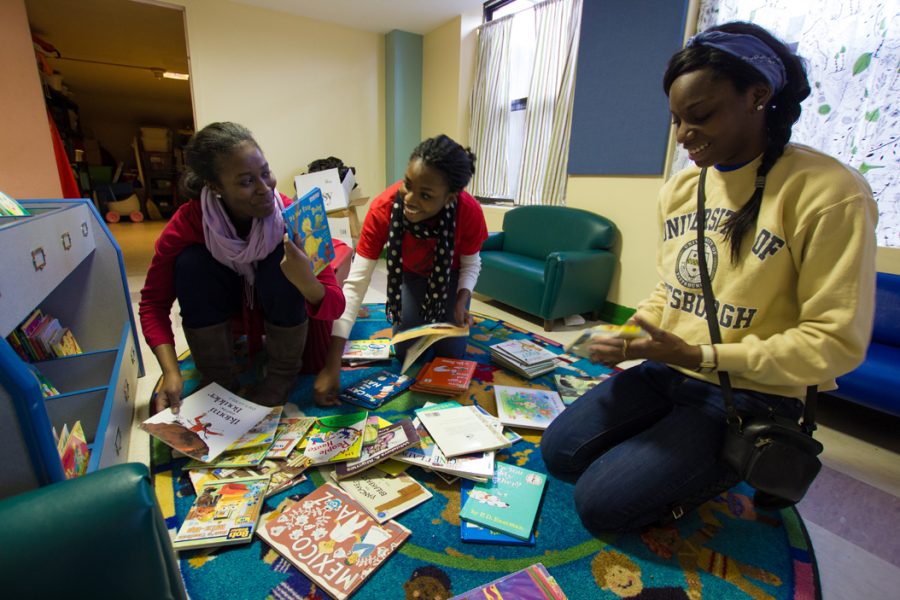Although Pitt announced plans to create community engagement centers seven months ago, there have been sparse details since about when or how the program will take shape.
In a June 2016 University press release, Pitt cited a need to establish partnerships with communities surrounding the University. The release also said the University is working to “[better] the lives of children, youth and families and [build] stronger, more reciprocal partnerships among Pitt and communities.”
Paul Supowitz, Pitt’s vice chancellor for community and governmental relations, said on Wednesday that two centers — in Homewood and the Hill District — will be the first to open some time during the fall 2017 semester. More centers will crop up after community leaders further develop plans with Pitt.
Supowitz also said Pitt is still working with community leaders and members of the University to make the centers mutually beneficial, but did not mention who these stakeholders are.
“The activities that go on really need to be win-wins. They need to meet neighborhood needs and the academic programs that we do here at the University,” he said. “Those sweet spots do exist.”
Oakland and its surrounding neighborhoods are home to roughly 40,000 residents. Homewood’s population is 6,442 people, according to the 2010 census; Central Oakland houses 6,086 residents; Shadyside is home to 13,915 residents and the Hill District houses 2,057 residents.
Pitt may renovate existing buildings to use for the centers in their respective neighborhoods, but hasn’t released what programs they will offer and who will be most involved in the planning.
Supowitz said Pitt has remained tight-lipped is because it’s still working with the communities to develop programs.
Pitt brought on Lina D. Dostilio, former director of the Center for Community-Engaged Teaching and Research at Duquesne University, as assistant vice chancellor for Pitt’s community engagement centers in December.
Dostilio and University spokespeople did not respond to recent requests for more information about her position. Shortly after her hiring, Dostilio said she was interested in creating “new and innovative partnership opportunities between the University and the neighborhoods.”
“The Community Engagement Centers will focus and coordinate the many service-learning programs and research projects already underway in these communities,” she said in a University release.
Dostilio’s work focused on service learning at Duquesne University. In the last ten years, Duquesne has changed its core curriculum, expanded the Office of Service Learning, created a Community Engagement Scholars program and added more than 40 service learning courses.
Some Pitt faculty members from existing community engagement efforts hinted at available programs focused on health care and education.
Robert J. Weyant, who represents the Pitt School of Dental Medicine (SDM) on the community engagement center advisory council, said the centers may be a way for the dental school to offer services to the community.
“The SDM is in the very early stages of working with the Centers for Community Engagement,” he said. If the partnership comes to fruition, “we will design treatment and educational programs to meet those needs,” he said.
Lori Delale-O’Connor, assistant director of research and development at Pitt’s Center for Urban Education (CUE), said the goal of the centers is to focus on community efforts that are already happening while impacting education in the community.
“The planning process has been thoughtful… both to understand the great work that is already going on in various schools, departments and centers, including CUE, as well as to identify areas where there are gaps and where we wanted to engage in work and research in the community,” she said.
Claire Dempsey, a senior social work major at Pitt and CUE’s undergraduate assistant, said her work in community engagement has allowed her to reflect on her identity and privilege.
“Although I still have a lot to learn, I have grown to understand that community members know better than anyone what they need,” she said.
Dempsey said she wants Pitt to take a more active stance in getting other students involved with community engagement. After taking a writing course with an emphasis on service-learning — the integration of community service with instruction — Dempsey said she was inspired to take action in the community. Now, as an undergraduate assistant at CUE, she performs research to help schools like the Pittsburgh Milliones school and Miller African-Centered Academy grow.
The course allowed students from all disciplines to engage in service with neighboring communities, Dempsey said.
“I learned a ton and also noticed a tangible shift in my peers’ attitudes and awareness from the beginning to the end of the semester. My biggest hope is that Pitt would require freshmen of all majors to take academically based community service courses,” she said.
Supowitz said the centers will provide even more opportunities for Pitt students to participate in community engagement.
“Students will have the opportunity to be involved in a wealth of community service initiatives through the Centers,” he said. “From one-time projects to ongoing service commitments, students will have the opportunity to work with neighbors, leaders and community-based organizations in the neighborhood.”


